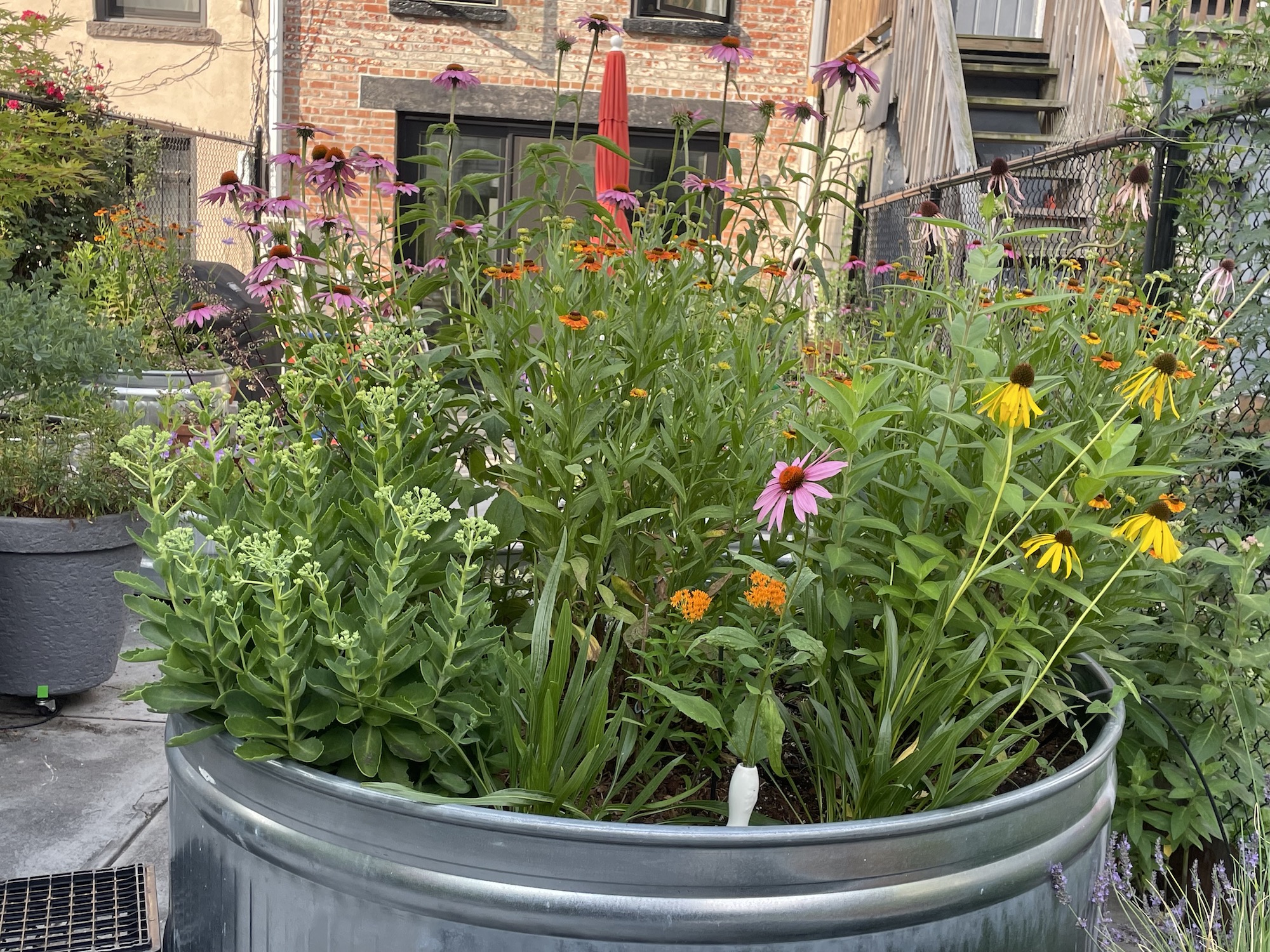There are two elementary causes that you simply simply might ponder planting a pollinator yard in pots in its place of inside the flooring: Each you don’t have a yard mattress—in any other case you’ve run out of space to plant one thing additional in your yard. In each state of affairs, a container yard can help pollinators merely along with an in-ground yard. Even within the occasion you aren’t dealing with space constraints, you might ponder together with some pollinator pots, says Alicia Whitaker, a grasp gardener and a co-leader for the Suffolk Alliance for Pollinators’s South Fork chapter. “Within the occasion that they’re near an outside seating area, the gardener can see and profit from the wildlife that shall be attracted.” Plus, she notes: Containers are moreover an necessary alternative if the gardener has a mobility drawback or totally different handicap that makes gardening inside the flooring robust.

Proper right here, 9 recommendations on how one can yard for pollinators in pots:
1. Be able to water sometimes.
The most typical mistake with any container yard is underwatering. “The soil in pots dries out sooner, notably in a extremely sunny and scorching setting, similar to a windy deck or brick patio flooring,” says Whitaker, who notes that folk sometimes underestimate the water needs of container crops because of they’re accustomed to worrying about overwatering indoor houseplants.
2. Go large.

Yard execs recommend choosing an important container potential. “The subsequent amount of soil will dry out a lot much less quickly,” explains Whitaker. Nevertheless there’s another reason to go large: The additional crops you cram proper right into a pot, the upper the possibilities the pollinators will uncover them. “As soon as we use large pots or gang pots collectively in groups, we create some floral targets for pollinators,” says ecological horticulturist Kim Eierman, the author of The Pollinator Victory Yard and founding father of EcoBeneficial. “That’s really important. Having a much bigger objective makes it quite a bit less complicated for the pollinator to look out the helpful useful resource.” Within the occasion you’re nervous about weight, you need to use a false bottom planter.
3. Amend the soil.
Every Whitaker and Eierman suggest mixing compost into the container’s soil, to nourish the crops and encourage root progress. “I apply a restricted amount of compost a pair events a 12 months to beef up the soil biology because of there’s no interchange with each different soil,” gives Eierman. “I merely put it on excessive and let rain do its issue.” Whitaker gives, “We frequently hear that native perennials favor leaner soil and don’t require fertilizer, nevertheless the artificial setting of a container requires greater soil and the widespread use of pure fertilizer.”
4. Consistency + choice is important.
Equivalent to individuals, pollinators need a numerous meals routine, nevertheless that doesn’t indicate you wish to run out and buy dozens of assorted crops. Eierman says to intention for a stability between vary and sufficiency of given crops. So, reasonably than having many tiny crops of every kind of species, focus on quite a few varieties. “It’s greater to have a additional substantial amount of that one species,” says Eierman. Whitaker gives, “Suppose drifts, not polka dots.” When pollinators forage they’re looking for that one plant species, so a repetition of bloom from container to container can enchantment to them with out having one large objective, Eierman notes.
5. Give the bugs color cues.

“Everyone knows that pollinators have their color preferences,” says Whitaker. Hummingbirds are thinking about purple flowers, whereas many bees love purples and yellows. Butterflies are drawn to quite a lot of colors, nevertheless moths are thinking about white blossoms. “it’s good to have a variety of colors, and a variety of shapes,” says Whitaker, noting, “There are nearly no improper choices.”
